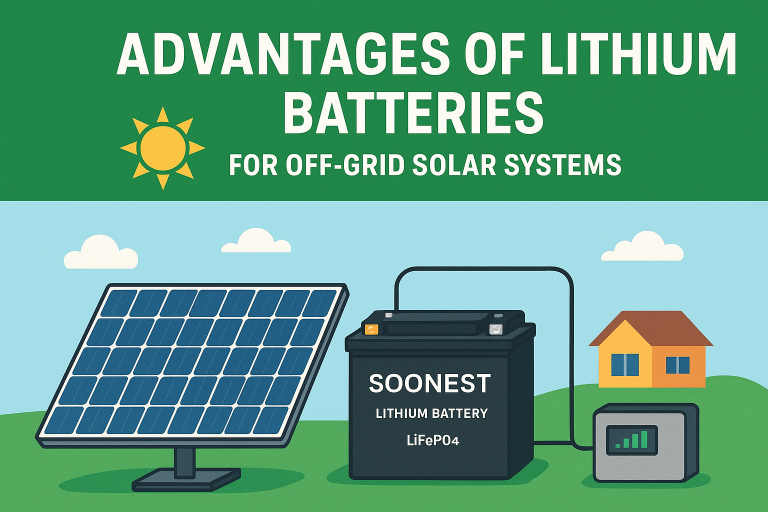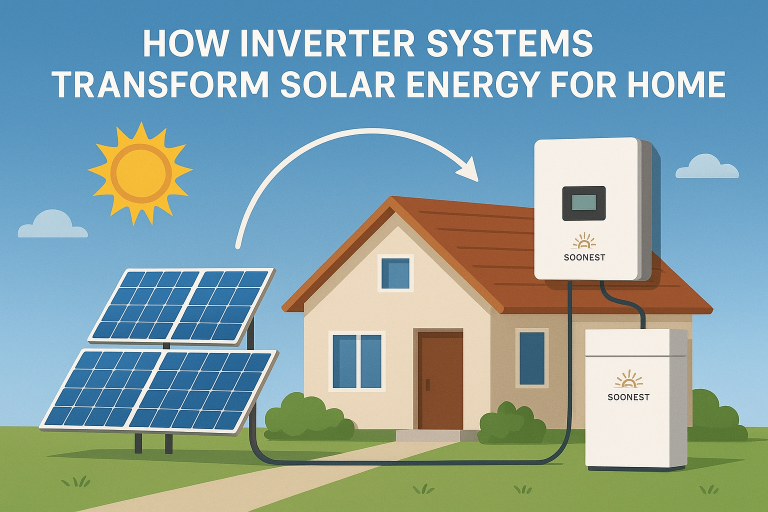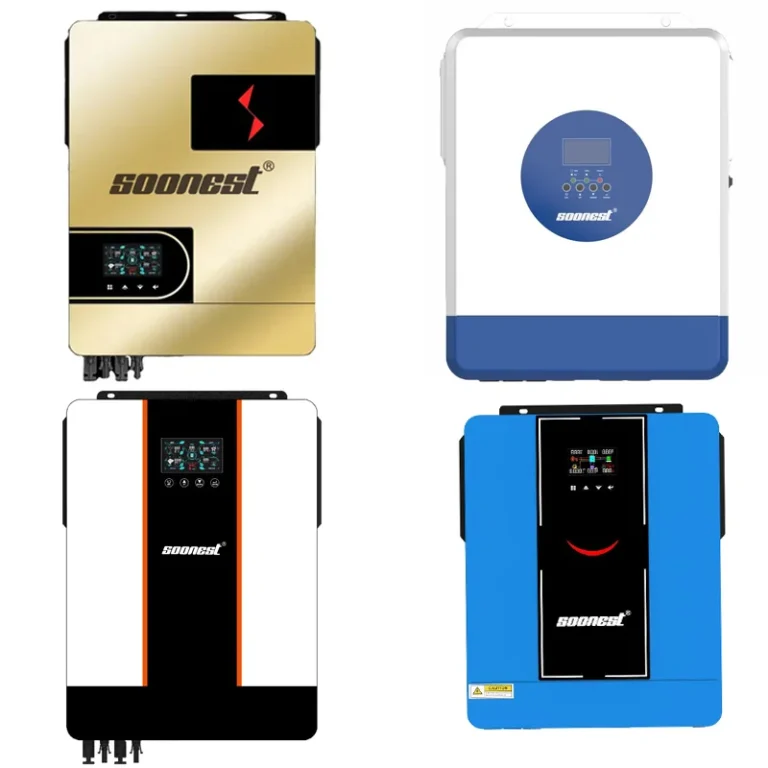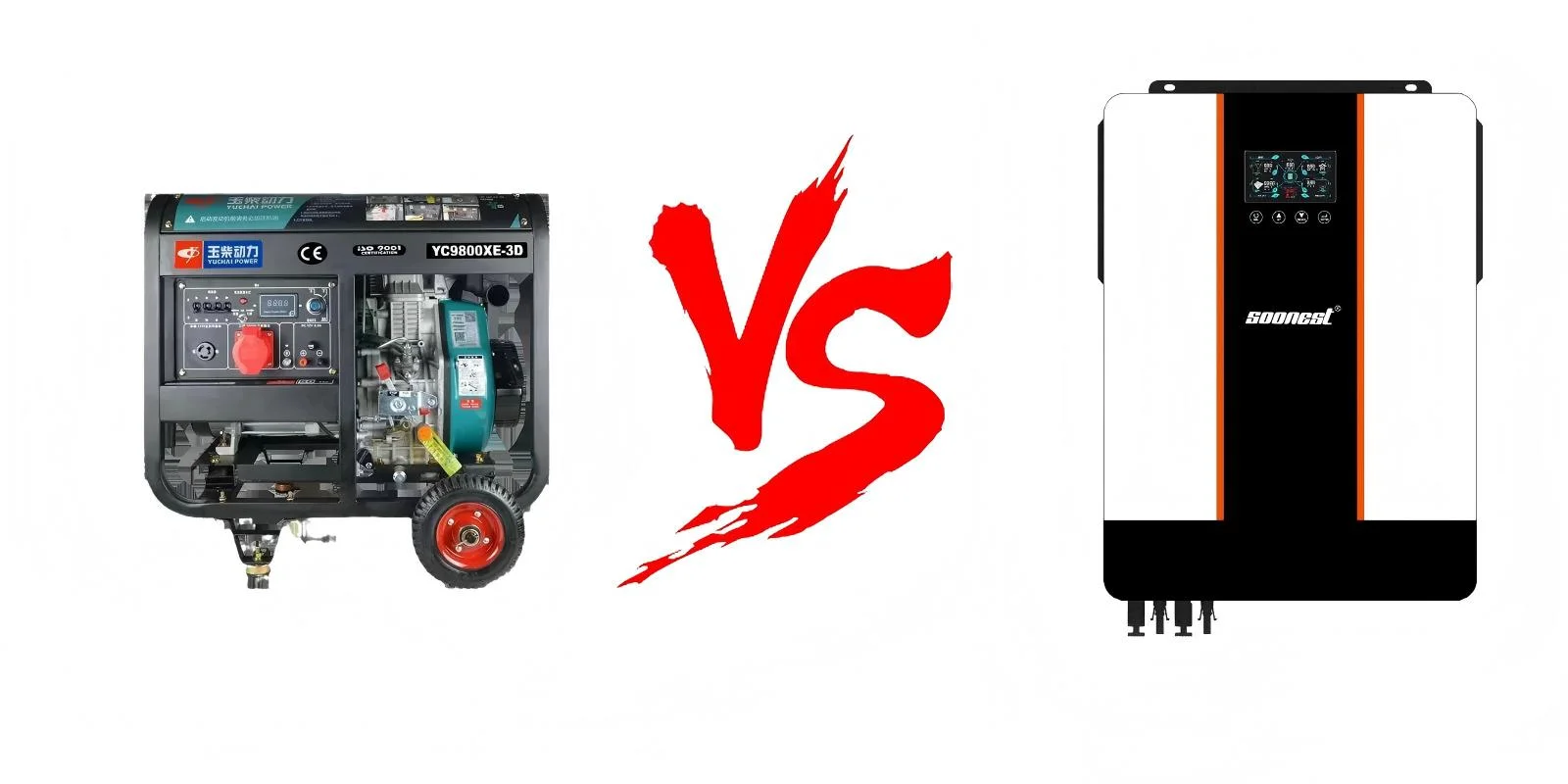
كل من بطاريات AGM والليثيوم تجلب فوائد مميزة لأنظمة الطاقة الشمسية. وحدات AGM قوية وسهلة الاستخدام. تكلفة أقل في البداية، مما يجعلها مناسبة لاحتياجات الطاقة الاحتياطية. لكنها تقيد المستخدمين إلى 50٪ فقط من إجمالي قدراتهم. ويقتصر عمرهم على 300-500 دورة شحن. خيارات الليثيوم مثل LiFePO4 تلمع في الحفاظ على الطاقة. إنها تسمح باستخدام 80٪ أو أكثر من طاقتها المخزنة. علاوة على ذلك ، فإنها تبقى على قيد الحياة 6000 دورة شحن. طبيعتها الخفيفة الوزن والموفرة للمساحة تجعلها مثالية للاستخدام المنتظم خارج الشبكة. يتطلب الليثيوم إنفاقًا مقدمًا أكبر. ومع ذلك ، فإن مدة الخدمة الطويلة وسهولة الرعاية والأداء الممتاز تجعلها اقتصادية مع مرور الوقت. ويتميز الليثيوم أيضًا بسلامة أفضل وبوثائق اعتماد بيئية. لا تزال AGM تعمل بشكل جيد للأنظمة الصغيرة أو بدوام جزئي. في أقرب وقت ممكن يوفر كلا النوعين ، مما يضمن التكامل السلس مع الإعدادات الشمسية الحديثة.
الاختلافات الرئيسية بين بطاريات AGM وبطاريات الليثيوم
فهم تشغيل بطارية AGM وملائمة الطاقة الشمسية
اختصار AGM هو Absorbent Glass Mat. هذه البطاريات الرصاصية الحمضية تحتجز الكهربائية في سجائر الألياف الزجاجية الخاصة. نحن’ وحدات مغلقة بالكامل. لا حاجة إلى الصيانة. يمكنهم توفير انفجارات قوية من الطاقة على الفور. تصميمهم المعبأ بشكل ضيق يوفر مقاومة الصدمات المتميزة. هذه المتانة تعزز موثوقية توصيل الطاقة.
الكهربائي يشبه هلام سميك. هذا’ تم إنشاؤها عن طريق خلط حمض الكبريتيك مع غبار السيليكا. هذه صيغة الجيل تمنع التسربات. يبقى في مكانه، وضمان حتى تنشيط لوحة. التصميم ينشر الحرارة بكفاءة. كما أنها تتعامل بشكل جيد مع تغيرات درجات الحرارة. تثبت هذه الصفات مفيدة بشكل خاص للأنظمة الشمسية في مناخات مختلفة.
بطاريات AGM توفير 30-40 واط ساعة لكل كيلوغرام. تصل بطاريات LiFePO4 إلى 90-120 واط / كيلوغرام. وبالتالي ، يوفر الليثيوم طاقة مماثلة مع وزن أقل. على سبيل المثال، بطارية 100Ah AGM تدفع الميزان إلى 30-35 كجم. بطارية LiFePO4 المعادلة تزن 12-15 كجم فقط [المصدر: جامعة البطارية، 2024]. تتعامل بطاريات AGM مع دورات 300-500 عند نصف التفريغ. يدير LiFePO4 دورات 6000-10000 عند التفريغ بنسبة 80٪ [المصدر: مجلة تخزين الطاقة ، 2023].
تركيب بطارية الليثيوم والاختلافات الهيكلية
تركيز الشمسية بطاريات الليثيوم في كثير من الأحيان تستخدم كيمياء LiFePO4. نحن’ إعادة الاحتفال لخفيفة الوزن وكثافة الطاقة العالية. نسبة الطاقة إلى الوزن المذهلة والإنتاج الموثوق به يعمل بشكل جيد مع المحولات الشمسية. على عكس بطاريات AGM ، تحافظ أنواع الليثيوم على جهد ثابت أثناء التفريغ. وهذا يوفر تشغيل ثابت طوال دورة الاستخدام.
كيف تؤثر الكيمياء على التطبيقات الشمسية
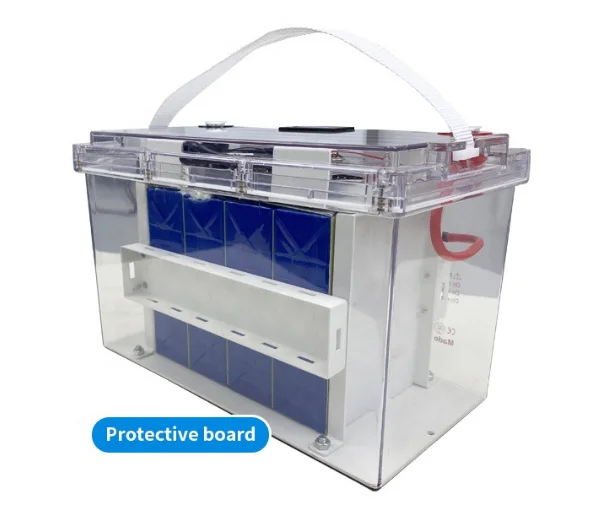
تعتمد بطاريات AGM على تقنية الرصاص الحمضي التقليدية. هذا يجعلها ثقيلة مع كثافة طاقة أقل. وتحقق بطاريات الليثيوم كفاءة أفضل من خلال الكيمياء الحديثة. تصميمها الفعال في المساحة يسهل التركيب. عادة ما تحتاج إصدارات الليثيوم إلى نصف مساحة مكافآت AGM. هذا يساعد الأنظمة الشمسية المنزلية. حجمها الصغير وقدرة الطاقة العالية تبسيط الإعداد.
مقارنة الأداء للاستخدام الشمسي
دمج بطارية AGM مع الألواح الشمسية
بطاريات AGM يمكن أن تعمل في الترتيبات الشمسية. تأتي أفضل النتائج عند الحد من عمق التفريغ. يجب على المستخدمين الاستفادة فقط من 50٪ من إجمالي السعة. هذا يمدد عمر البطارية. تظهر كفاءة 80-85٪ ذهاب وإياب. وهذا يعني أن 15-20٪ من الطاقة تفقد أثناء الشحن / التفريغ. تحقق بطاريات LiFePO4 كفاءة 95-98 ٪. يستخدمون الطاقة الشمسية بشكل أفضل [المصدر: NREL ، 2024]. بطارية 100Ah AGM تقدم طاقة قابلة للاستخدام 50Ah فقط. يوفر LiFePO4 مماثل قدرة قابلة للاستخدام 80-90Ah [المصدر: Victron Energy ، 2023].
بطاريات AGM تناسب سيناريوهات النسخ الاحتياطي أو الاستخدام العرضي. نحن’ ليست مثالية للاحتياجات اليومية للتفريغ العميق الشائعة في المنازل خارج الشبكة.
الليثيوم’ مزايا كفاءة الطاقة
بطاريات LiFePO4 تتحمل دورات 6000-10000 عند التفريغ بنسبة 80 ٪. تستمر أنواع AGM فقط دورات 300-500 عند التفريغ بنسبة 50 ٪. وهذا يجعل الليثيوم مثاليًا للعيش بدوام كامل خارج الشبكة [المصدر: مجلة مصادر الطاقة ، 2024]. بالإضافة إلى ذلك ، يحافظ LiFePO4 على 3.2-3.4 فولت لكل خلية أثناء الاستخدام. تنخفض بطاريات AGM تحت 12 فولت عندما تكون فارغة تقريباً. يمكن أن يعوق هذا أداء المحول [المصدر: بطاريات Battle Born ، 2024]. الليثيوم’ الجهد المستقر يبقي المحولات تعمل بشكل صحيح في جميع مستويات الشحن.
عوامل الطول العمر والصيانة
عمر البطارية المتوقع
بطاريات AGM عادة ما تستمر 300-500 دورة. تعتمد الحياة الفعلية على أنماط الاستخدام والبيئة. بالنسبة للأجهزة الشمسية ، يعني هذا 3-5 سنوات. بطاريات LiFePO4 عالية الجودة تبقى على قيد الحياة 6000-10000 دورة عند التفريغ بنسبة 80 ٪. هذا يعادل 10-15 سنة من الاستخدام اليومي [المصدر: Energy.gov ، 2023]. هذه القدرة على التحمل تجعل الليثيوم مثاليًا لإعدادات خارج الشبكة الدائمة أو الأنظمة الشمسية الهجينة.
متطلبات الصيانة
بطاريات AGM don’ تحتاج إلى إعادة ملء المياه. لكنهم’ إعادة عرضة لدرجات الحرارة المتطرفة والشحن الزائد. معدات الشحن المناسبة مهمة. بطاريات الليثيوم تقريبا خالية من الصيانة. يتحكم نظام BMS المدمج تلقائياً في درجة الحرارة والجهد والتيار. يحافظ الليثيوم على جهد ثابت أثناء التفريغ. إنهم لا’ تعاني من تأثير الذاكرة. الشحن الجزئي لا’ يضر بأداءهم.
جوانب السلامة والبيئة
ميزات حماية التسخين الزائد
كلا النوعين من البطاريات تتضمن تدابير السلامة. هذه تتكون من فتحات الضغط والقطعات الحرارية. بطاريات الليثيوم ميزة متقدمة تكنولوجيا BMSهذا يوقف المواقف الخطيرة قبل حدوثها. بطاريات AGM تستخدم أنظمة حماية أبسط. ويمكن أن تتفاعل هذه الوسائل ببطء أكبر أثناء حالات الطوارئ. الليثيوم’ التهوية الذكية تطلق بأمان الغازات المتراكمة. هذا يضمن التشغيل الآمن.
مقارنة التأثير البيئي
بطاريات أيون الليثيوم تخلق انبعاثات أقل لكل كيلوواط ساعة على مدى عمرها. نحن’ إعادة أكثر كفاءة وطول الأمد. إنتاج الكربون لديهم حوالي 50-70 كيلوغرام من ثاني أكسيد الكربون / كيلوواط ساعة. تنتج بطاريات AGM 100-120 كيلوغرام من ثاني أكسيد الكربون/كيلوواط/ساعة [المصدر: العلوم والتكنولوجيا البيئية، 2023]. ومع ذلك ، يتم إعادة تدوير 95٪ من بطاريات الرصاص الحمضية في جميع أنحاء العالم. وتبلغ إعادة تدوير الليثيوم حالياً 60-70%. هذا الرقم يستمر في الارتفاع [المصدر: وكالة الطاقة الدولية، 2024]. يتجنب الليثيوم الدخان الحمضي ، مما يجعله أكثر نظافة أثناء التشغيل. كلاهما له فوائد ، ولكن الليثيوم يقلل من الانبعاثات أكثر مع مرور الوقت.
تحليل التكلفة مع مرور الوقت
اختلافات الأسعار الأولية
تكلفة بطاريات AGM أقل في البداية. طرق إنتاجها راسخة. تتراوح الأسعار بين 100 و150 دولار لكل كيلوواط ساعة. تكلفة بطاريات LiFePO4 300-500 دولار لكل كيلوواط ساعة [المصدر: Solar Power World ، 2024]. ولكن AGM’ القدرة المحدودة للاستخدام وعمر أقصر يعني استبدالات أكثر تواترا. وهذا يقلل من وفورات التكاليف. الليثيوم’ ارتفاع سعر الشراء يتوازن من خلال حياة أطول ورعاية أبسط.
إجمالي تكلفة الملكية
يوفر الليثيوم المال على المدى الطويل. توفر طاقة أكثر قابلية للاستخدام. تحتاج إلى استبدالها بشكل أقل. الصيانة هي الحد الأدنى. بالنسبة لأنظمة 10 كيلوواط / ساعة ، يبلغ مجموع AGM 3000-4000 دولار على مدى عشر سنوات مع استبدالات. تكلفة أنظمة LiFePO4 3500-4500 دولار بدون استبدال [المصدر: BloombergNEF ، 2024]. الليثيوم هو الخيار المالي الأكثر ذكاء لتخزين الطاقة الشمسية.
التوافق مع الأنظمة الشمسية الحديثة
التكامل مع المعدات الحالية
كل من AGM والليثيوم يعملون مع وحدات التحكم في الشحنة والمحولات الحديثة. يوفر الليثيوم جهدًا مستقرًا أثناء التفريغ. هذا يساعد الأجهزة الحساسة مثل المحولات الهجينة والعتاد المنزلي الذكي. كما يسهل تخطيط النظام والنمو. الجهد الثابت عندما يكون فارغ تقريبا يحافظ على أداء موثوق به.
في أقرب وقت’ حلول البطارية الشمسية
هل تحتاج إلى تخزين موثوق للطاقة الشمسية؟ تقدم أسرع خيارات عملية ومثبتة. تشمل مجموعة كل من بطاريات AGM / GEL و LiFePO4. هذه تناسب الأنظمة الشمسية على السطح والكابينات البعيدة. سواء كان تحسين الإعدادات القائمة أو إنشاء إعدادات جديدة، تقدم Soonest بطاريات متينة ومختبرة. يأتي الدعم العالمي مع خيارات بأسعار معقولة من 50Ah إلى 250Ah. وتلبي منتجاتها احتياجات الطاقة المتجددة المختلفة. وتشمل الاستخدامات المنازل خارج الشبكة والسيارات المعدنية والأنظمة الشمسية الهجينة.
اختيار البطارية المناسبة لاحتياجاتك
لأنظمة صغيرة تركز على التكلفة
اختر اجتماع عام لاحتياجات الطاقة من وقت لآخر مثل النسخ الاحتياطي. يحافظ على التكاليف الأولية منخفضة. توفر AGM طاقة موثوقة أثناء انقطاع الخدمة أو في الليل. يبقى صديق للميزانية.
للعيش بدوام كامل خارج الشبكة
يعمل الليثيوم بشكل أفضل في الإعدادات الدائمة خارج الشبكة. يتعامل مع الاستخدام اليومي الثقيل على الرغم من تغير ضوء الشمس. عمره الطويل والإنتاج المستمر يضمن الأداء على مدار السنة.
لأقصى قدر من الأداء والسهولة
اختر الليثيوم لتشغيل خالي من المتاعب وأعلى أداء. هذا’ BMS الذكي يتعامل مع جميع إدارة الطاقة. هذا يسمح بإعداد بسيط مع الحفاظ على كفاءة عالية.
الأسئلة الشائعة
Q1: هل يمكنني خلط بطاريات AGM والليثيوم في نظام شمسي واحد؟
ج: لا. احتياجات الشحن المختلفة تجعلها غير متوافقة. خلطها يقلل من الكفاءة ويخطر الضرر.
Q2: هل تحتاج بطاريات الليثيوم إلى محولات خاصة؟
ج: ليس دائما. لكن أفضل النتائج تأتي مع إعدادات محول محسنة لـ LiFePO4.
Q3: أسرع’ بطاريات السلامة المعتمدة؟
ج: نعم. وتشمل ميزات سلامة متعددة مثل فتحات التهوية والتحكم الإلكتروني. وتلبي معايير الطاقة المتجددة.

